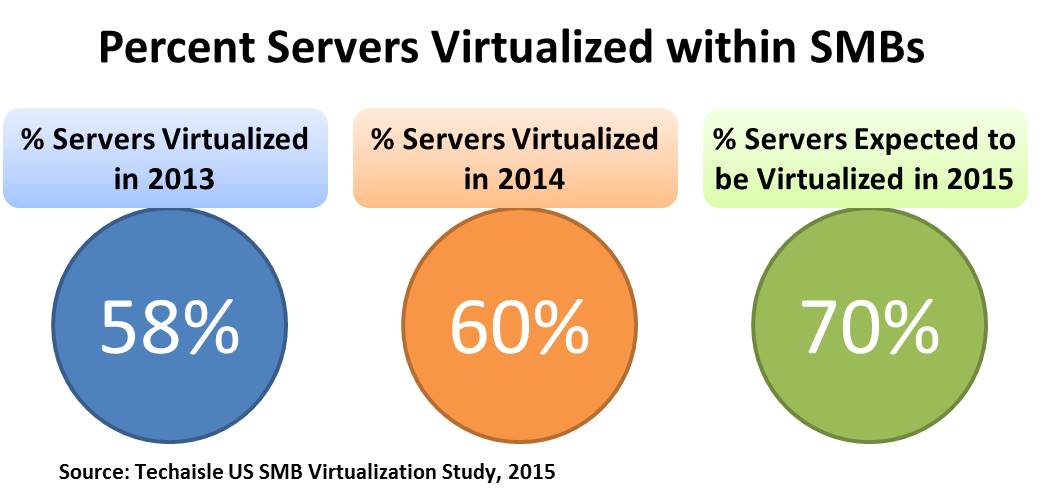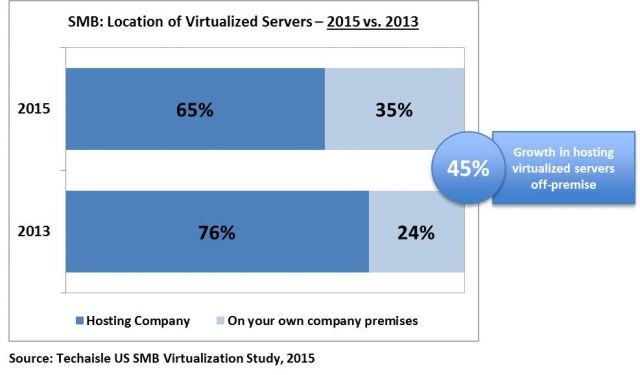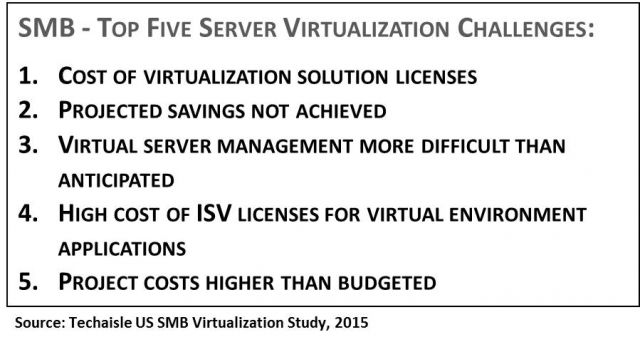On October 12 Dell took an enormous step along its new chosen path of reorienting away from a provider of low-cost PC and server hardware to a role as a more sophisticated supplier to businesses that view technology as a strategic asset rather than as a tactical necessity. Dell announced a “definitive agreement” to acquire EMC (including EMC’s ownership positions in VMware, RSA Security, Pivotal Software, Virtustream and other industry firms and joint ventures) for $67 billion – the largest-ever acquisition in the information technology industry. The deal was announced to analysts and media in a conference call that featured Dell Founder and CEO Michael Dell, EMC President/CEO/Chairman Joe Tucci and Silver Lake Partners Managing Partner and Managing Director Egon Durban, and included VMware CEO Pat Gelsinger, Dell CFO Thomas Sweet, and David Goulden, who acts as CEO for EMC’s Information Infrastructure business.
Two second Take
The acquisition greatly enhances Dell’s position in higher-margin, higher growth markets: storage is expanding faster than servers or PCs, and EMC is focused on the higher-margin software used for device management as opposed to the creation of physical devices themselves.
Revenue Synergies – the $67 billion question
While the call eschewed any commentary on staff redundancies between the two organizations, it focused its messaging on “revenue synergies that are three times larger than cost synergies,” a justification for the deal that comes primarily from new growth opportunities rather than from squeezing out costs through headcount reductions.
It can be assumed that most of this growth potential comes from expanded market rather than product positioning. In his remarks, Michael Dell noted that Dell/EMC (including VMware) have already established “leadership positions in storage, servers, virtualization and PCs,” and have strength in IT’s “most important growth vectors,” including software-defined data centers, hybrid cloud, converged infrastructure, mobility and security – and are “positioned as a leader in an amazing 22 Gartner Magic Quadrants.”
If Dell and EMC are already leaders in all of these large and/or expanding areas, then the question is where will further growth come from? It appears that the combined entity is banking on the benefits associated with increased customer account presence. In particular, Michael Dell noted that “as the data market moves to a compute-centric, converged model, Dell’s server franchise is a natural fit with EMC’s strength.” The theory appears to be that by combining EMC’s prowess at selling to enterprise accounts and Dell’s broader compute portfolio the company can increase share of wallet within major accounts; there is also some opportunity for using EMC to drive increased storage presence within Dell’s “growing commercial infrastructure franchise” in the SMB base, but this is likely to be a secondary consideration.
Security, Converged Infrastructure, Mobility, Big Data
Dell has been investing heavily in building a comprehensive security portfolio, assembling advanced threat identification services firm SecureWorks (acquired by Dell in 2011), firewall/unified threat management from vendor SonicWALL (acquired in 2012), backup software specialist AppAssure (2012) and identity monitoring and management software vendor Quest (also acquired in 2012), plus related capabilities sourced from thin client vendor Wyse (purchased by Dell in 2012) and from work done by Dell’s own engineering team. With the latest acquisition Dell adds encryption pioneer RSA Security (which became a division of EMC after being acquired in 2006) and enterprise mobility management supplier AirWatch (acquired by VMware in 2014), thus diversifying the portfolio even more. Dell has been positioning end-to-end security as a differentiating feature of its infrastructure portfolio for some time and with the acquisition Dell’s security story becomes even stronger, and even more distinct from the approaches of competitors like Lenovo, HP and Oracle.
Although it is tempting to look at a Dell/EMC/VMware combination as a means of consolidating a converged infrastructure offering capable of competing with the Cisco-led Vblock (Cisco, EMC, VMware) and FlexPod (Cisco, NetApp, VMware) offerings, it appears that Dell’s vision is broader and more strategic.
The acquisition also gives Dell a foothold into the big data deployment market opportunity where the enterprise spending is still hardware driven rather than software and analytics uptake.
And with AirWatch in the mix, Dell finally gets a mobility story in place beyond just the mobile devices.
Move to cloud
Michael Dell believes that “the combined company is very well positioned to address the move to the cloud,” both by providing infrastructure to public cloud providers and private cloud operators and through VMware’s ability to enable hybrid cloud. But in his remarks, he went further, observing that “I think what you’re seeing with the Software Defined Data Center is an ability to take the benefits of the public cloud and bring them into an on-premise data center.” He considers the complexities associated with connecting compute, network and storage as a major demand driver for public cloud, and virtualization and converged infrastructure as a means of delivering greater simplicity in on-premise environments, allowing firms to focus on optimizing for “the application user, quality of service and security.”
But Michael Dell is not satisfied by simply focusing on leveling the terrain between cloud and on-premise infrastructure, his vision is to supply infrastructure across different environments (public clouds, SaaS, hyperclouds, private clouds), providing common, connected and secure platforms to customers of all sizes, wherever their IT workloads reside.
Financial challenges
A lot has been said and written about financial challenges but due to the enormity of the deal size it is worth another read, from our point-of-view. The cost of debt may have an impact on the overall cost of operating the newly-expanded Dell entity. Dell was thought to have about $12 billion in debt prior to this deal; clearly, this figure will increase substantially after the acquisition. Michael Dell did state that observers could expect “a significant deleveraging” resulting from cost savings, increased revenue and cash flow management improvements that come with being a private company, but $67 billion represents a very high hurdle for these activities. Obtaining the funds themselves is not an issue but it seems likely that the costs associated with debt service may affect product prices and margins, and it is difficult to boost either in many of Dell’s core hardware markets. It might well be that asset sales become important to enhancing corporate profitability by reducing the cost base of the company.
Should debt reduction become a priority, the newly-expanded Dell would have a few options, starting with VMware. Although there was no mention of selling VMware as part of this deal – indeed, VMware CEO Pat Gelsinger was described as having a “very bright future” in the new organization – EMC’s 80 percent stake in VMware is worth more than $26 billion at current valuations. It will be very tempting to convert this equity into reduced debt to help the competitiveness of future hardware products, though this would be at the cost of an ownership position that (as per the terms of the Dell deal) accounts for 40 percent of EMC’s overall value. There are other avenues Dell could pursue – for example, it could combine its in-house security assets with RSA, and perhaps AirWatch, to create a stand-alone security business that could be monetized via issuance of public market shares – but a VMware sale is clearly the most direct means of raising capital to reduce debt.
Go-to-market challenges
An often-overlooked ingredient in a merger is the extent to which go-to-market staff and strategies can be melded in a single organization. This will likely be a significant issue for the expanded company. Dell and EMC customer-facing staffs have very different skills and compensation levels and may not be neatly amalgamated into a single sales force. The channel strategies of the two firms are different as well. Because EMC has focused primarily on large deals within large accounts and Dell has been more SMB (and consumer) focused, it may be that the sales staff and channel strategies can be aligned by sector but that will not erase the GTM discrepancies.
EMC sales staff work large, high margin deals, and are among the best compensated reps in the industry; Dell certainly cannot afford to reduce EMC-classic rep compensation (which would trigger a mass exodus to competitive startups) or to pay EMC rates to Dell-classic sales staff (which would consume more than 100 percent of current margins). From a channel and alliance perspective, EMC is a strategic partner to its enterprise-level services and software partners; Dell is primarily a tactical resource for SMB-focused VARs and integrators. These approaches target different partners with different programs and are delivered in different ways. Again, it is possible to align strategies by market sector, but many partners are likely to try to “shop” across programs to “Frankenstein” together blends of services and compensation structures that optimize the supplier benefits that they derive from the new Dell, and some – notably, Cisco, which is an EMC ally via Vblock – will find a Dell partnership untenable.
Final Take
While there are reasons to admire Dell’s strategy, it is very rare to find successful examples of a merger yielding a combined market presence that eclipses the individual positions of the firms involved. However, these are still early days, and the hard decisions will not be made until mid-2016, but there are still many operational issues to be ironed out between now and then. Even though Dell is not a public company, it will need to explain its expectations of “revenue synergies” to customers, analysts and the press, and Silver Lake will likely need to do the same for its current and potential investors.
There are reasons to both admire and to question the Dell/EMC deal. The answer to the $67 billion question will be found in the opportunities for “revenue synergies” that extend well beyond today’s converged infrastructure SKUs, and into the cloud and the core operating models of customers ranging from EMC’s traditional public sector and large enterprise accounts to Dell’s SMB buyers. If Dell can extend its reach across the full spectrum of IT/business infrastructure, it may build a position as the behemoth HP believed it would become, before it was bifurcated into two distinct business units. If it does not, it may more closely resemble Oracle, trying to assemble a coherent vision from a series of mismatched pieces.
The real winner though is Silver Lake. It has positioned itself as a central force within the technology industry, an unusual position for a private equity firm, and may signal that excellence in financing is joining excellence in inventing technology and excellence in technology marketing as paths to the industry’s pinnacle.




















